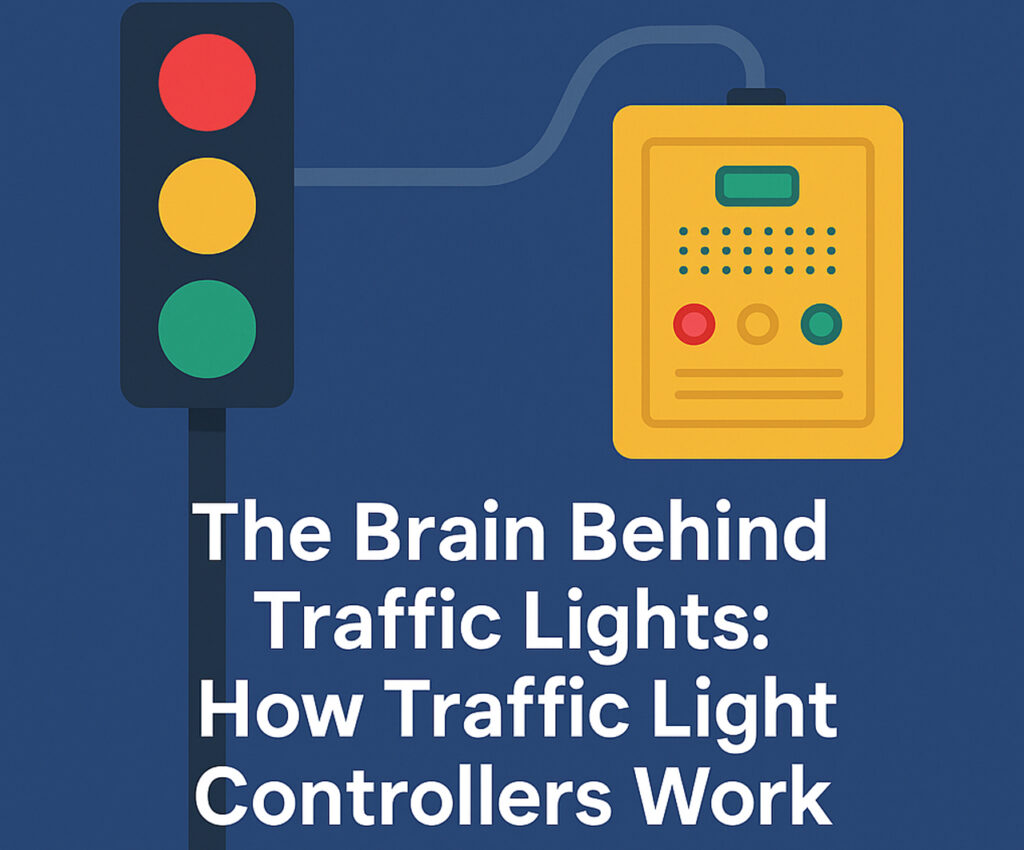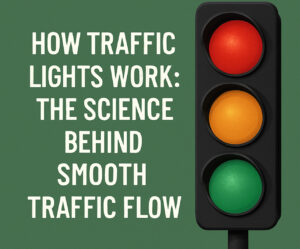Every intersection you pass through runs on more than just green, yellow, and red lights. The real intelligence lies in a small, often unnoticed device: the traffic light controller. Whether it’s a basic crossroad in a small town or a bustling urban intersection, a traffic signal controller keeps everything flowing smoothly. And now, with innovations like the traffic light controller with remote, city planners and engineers have even more control and flexibility to adapt to real-time traffic conditions. Know more..
What Is a Traffic Light Controller?
Think of a traffic light controller as the brain of an intersection. It governs when each signal changes, how long it stays that way, and what to prioritize—vehicles, pedestrians, buses, or emergency vehicles. These devices are programmed with specific logic to ensure safety and efficiency.
The controller cycles through phases and intervals, which are carefully timed to manage traffic flow. For instance, a busy street might get more green time during rush hour, while a side road might get less. This balancing act is where the traffic signal controller earns its value.
Core Components of a Traffic Signal Controller
To understand how a traffic signal controller works, let’s look at its key parts:
- Timer: Controls the length of each signal phase.
- Microprocessor: Executes pre-programmed logic or dynamic decisions.
- Input/Output Interfaces: Connects sensors and communicates with the signals.
- Memory: Stores signal plans and traffic data.
Modern systems now include cloud connectivity and remote access, especially with advanced tools like a traffic light controller with remote, making updates and monitoring more efficient.
Fixed-Time vs. Adaptive Systems
Not all intersections are equal, and neither are their controllers. There are two main types of traffic control systems:
- Fixed-Time Controllers: These follow a set schedule, regardless of actual traffic. Great for predictable traffic patterns but less effective when congestion varies.
- Adaptive Controllers: These adjust in real-time based on sensor inputs. Cameras, inductive loops, and even AI analyze the current situation and update the lights accordingly.
The latest traffic light controller with remote access often integrates adaptive features. This allows city officials to override standard programming when accidents, parades, or emergencies occur.
Sensors Make the System Smarter
To make decisions, the controller relies on data. Sensors embedded in the road or mounted on poles detect vehicles, bicycles, and pedestrians. This data feeds into the traffic signal controller, which then calculates the optimal signal pattern.
Common types of sensors include:
- Inductive Loop Detectors: Embedded in the pavement
- Infrared or Microwave Sensors: Mounted above ground
- Video Detection Systems: Use cameras to assess traffic volume and movement
These inputs are crucial for modern, responsive systems that leverage a traffic light controller with remote operation for faster decision-making.
Remote Control = Real-Time Efficiency
The integration of a traffic light controller with remote capabilities has changed the game. Previously, any change in signal timing meant sending someone physically to the controller cabinet. Now, traffic engineers can monitor and adjust signals from a central traffic operations center.
Benefits of remote-controlled systems include:
- Faster response to unexpected events
- Improved coordination between intersections
- Data collection for long-term planning
- Cost savings from fewer on-site visits
Emergency Vehicle Preemption
One key feature of smart traffic signal controllers is their ability to give priority to emergency vehicles. Sensors can detect an approaching ambulance or fire truck and immediately switch lights to green in their direction. This function saves lives and minimizes response time.
Pedestrian Safety Features
Safety isn’t just for vehicles. Many traffic light controllers include pedestrian-focused features like:
- Countdown timers
- Audible signals for the visually impaired
- Longer crossing times during specific hours (e.g., school zones)
Some systems even allow for pedestrian push buttons that alter the signal cycle, giving real-time responsiveness to foot traffic.
Integration with Smart Cities
As cities get smarter, so do their intersections. A traffic light controller can now be part of an integrated smart grid, sharing data with other infrastructure like public transport, weather systems, and emergency services.
With the addition of a traffic light controller with remote management, these systems become more agile and efficient, aligning with sustainability and congestion-reduction goals.
Case Study: Urban Intersection Overhaul
Consider a medium-sized city facing major congestion at a five-way intersection. Previously managed by a fixed-time traffic signal controller, drivers faced long waits even during off-peak hours. By installing a sensor-based traffic light controller with remote access, the city reduced average wait times by 35% and saw a 20% drop in minor collisions.
Engineers could tweak signal cycles remotely based on data collected, dramatically improving flow without tearing up streets or adding lanes.
Environmental and Economic Benefits
Reducing idle time at intersections does more than help drivers. It cuts emissions and fuel consumption. A traffic signal controller that minimizes wait time contributes to greener cities.
And the economic benefits are real:
- Less time in traffic means higher productivity
- Fewer delays for commercial deliveries
- Cost savings in fuel and maintenance for commuters
Add in the durability and upgradability of a traffic light controller with remote, and the long-term ROI becomes clear.
Security and Redundancy
Security is a growing concern, especially with remote connectivity. Advanced traffic signal controllers feature encrypted communication and multiple levels of access control. Redundant systems ensure lights continue functioning even during power outages or hardware failures.
Backup batteries and manual override options provide peace of mind that the system won’t fail when it’s needed most.
The Road Ahead
We’re entering an era where AI and machine learning will play a bigger role. Future traffic light controllers may learn traffic patterns over time and optimize themselves. Connected vehicles will communicate directly with traffic systems, further reducing delays and improving safety.
The rise of autonomous vehicles will make the traffic signal controller even more central to urban mobility. Already, car manufacturers are exploring V2I (vehicle-to-infrastructure) technologies that link directly to these controllers.
Conclusion
The humble traffic light controller is far more than a timing device. It’s the brain of modern intersections, managing traffic with precision, intelligence, and flexibility. From basic timing functions to real-time remote access, the evolution of the traffic signal controller is reshaping our roads.
And with the growth of smart cities and connected technologies, the traffic light controller with remote access stands as a cornerstone of safer, cleaner, and more efficient urban living. Whether you’re a driver, pedestrian, or planner, it’s time to appreciate the unseen genius working quietly behind every green light.





